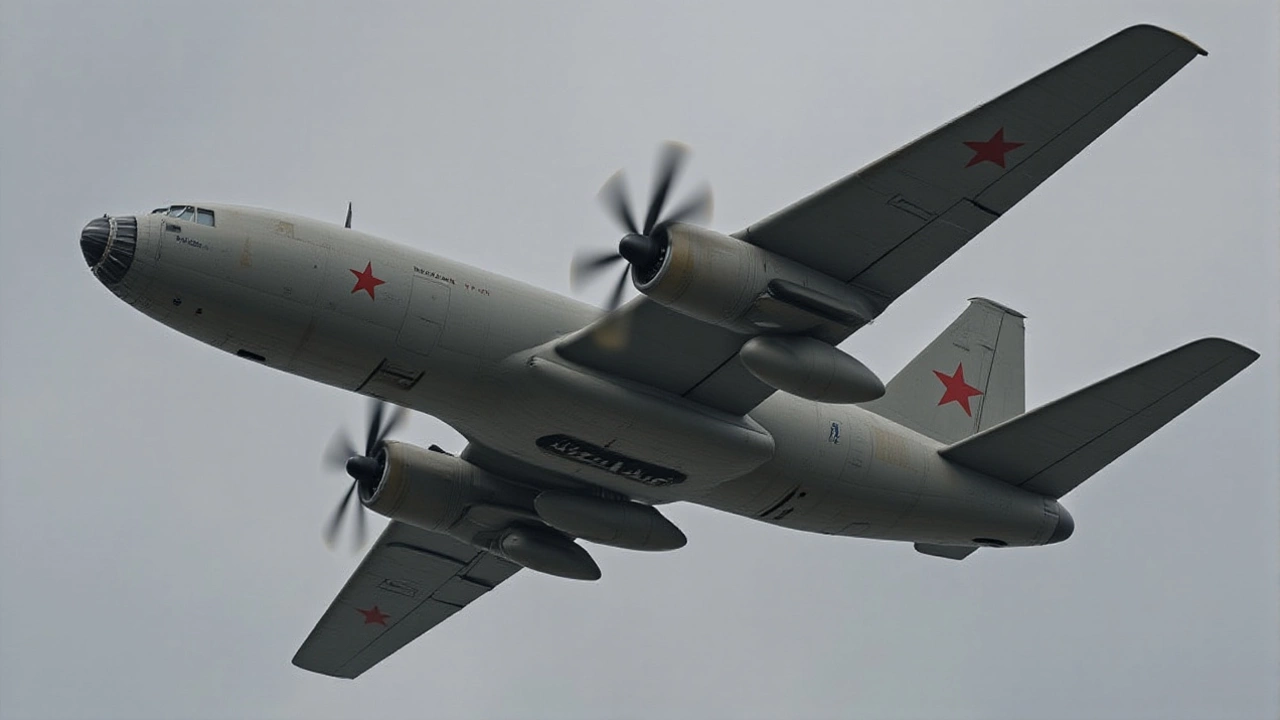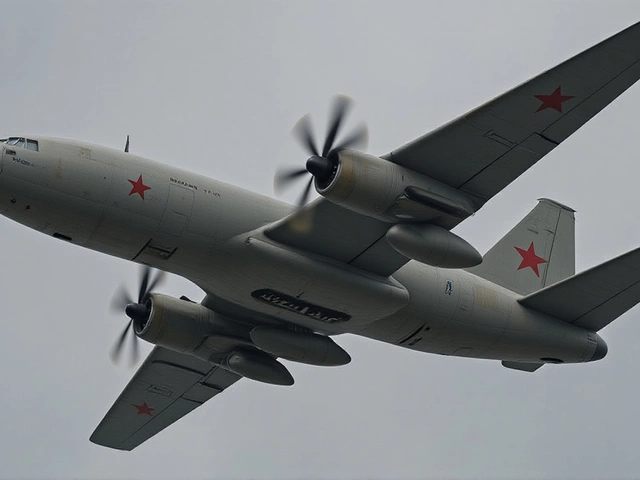Royal Navy’s HMS Duncan Tracks Russian Warship in NATO‑Led ‘Historic First’

When Commander Dan Lee took the helm of HMS Duncan on 17 October 2025, he knew the North Sea was about to become a stage for a “historic first.” The Type‑45 destroyer, home‑ported in Portsmouth, was ordered by NATO’s Allied Maritime Command to shadow the Russian Udaloy‑class vessel Vice Admiral Kulakov as it prowled the congested waters between the United Kingdom and continental Europe.
Background: Tensions on Europe’s Maritime Front
Since Moscow’s full‑scale invasion of Ukraine in February 2022, the Royal Navy has logged more than 40 separate incidents of Russian ships or submarines skulking near British coasts, according to a Times investigation cited by Forces News. The pattern has sharpened over the past year, with Moscow deploying newer surface combatants into the North Atlantic to test NATO’s resolve. Experts at the Royal United Services Institute warned in June that “the Arctic and the North Sea are becoming a chessboard for great‑power naval posturing.”
Against that backdrop, NATO re‑energized its standing maritime forces. Standing Maritime Group 1 (SNMG 1), a high‑readiness flotilla, was tasked in early 2025 with bolstering patrols from the Baltic to the Bay of Biscay. The group’s mandate includes rapid response to any hostile vessel threatening allied waters, a clause that proved pivotal when Vice Admiral Kulakov brushed past the southern edge of the UK’s air defense zone.
The 48‑Hour Tracking Operation
On the afternoon of 17 October, radar operators in Northwood spotted Vice Admiral Kulakov steaming westward at roughly 18 knots. Within minutes, HMS Duncan altered course, slipping into the North Sea’s busy lanes. The destroyer’s sophisticated SAMPSON radar locked onto the Russian ship’s silhouette, while a Wildcat helicopter from 815 Naval Air Squadron lifted off from RNAS Yeovilton, hovering close enough to relay real‑time imagery back to the bridge.
“This mission highlights the Royal Navy’s commitment to safeguarding UK waters and working seamlessly with NATO allies,” said Commander Lee in an after‑action briefing. The helicopter’s infra‑red cameras captured the Russian vessel’s distinctive radar mast, confirming its class and allowing NATO analysts to verify that no additional armament had been fitted since its 2019 refit.
Over the next 48 hours, HMS Duncan trailed Vice Admiral Kulakov through the narrow Strait of Dover, into the English Channel, and finally past the rugged cliffs of Ushant (Ouessant) off Brittany. At each waypoint, the Wildcat hovered low, its crew maintaining a visual lock while NATO’s maritime command center in Northwood coordinated updates with allied assets.
Multinational Support and Assets
The operation was anything but a solo British effort. A Dutch Air Force NH90 rotorcraft joined the Wildcat at 02:00 UTC on 18 October, its crew exchanging data via a secure NATO link. Meanwhile, a French Navy frigate, part of the same SNMG‑1 task force, provided surface‑to‑surface radar coverage, ensuring the Russian destroyer could not slip through a blind spot.
“The coordination was seamless, a real‑world proof of NATO’s integrated maritime posture,” noted a senior officer from the French Navy, who asked to remain unnamed for security reasons. The combined air‑sea effort forced Vice Admiral Kulakov to maintain a predictable track, effectively limiting any opportunity for surprise maneuvers.
Escalating the stakes, Al Carns, the United Kingdom’s Minister for the Armed Forces, told Parliament that “the Royal Navy stands ready to respond to any Russian naval activity to safeguard Britain and its territorial waters.” His remarks underscored the political weight of a British warship operating under direct NATO command rather than national orders.
Political Reactions and Defence Cooperation
Across the Channel, John Healey, the UK Defence Secretary, linked the tracking mission to the broader “Trinity House Agreement” signed with Germany in 2024. Under that pact, a German Navy P‑8A Poseidon aircraft is slated to visit RAF Lossiemouth later this year for joint anti‑submarine training.
“A year on from the Trinity House Agreement, the UK and Germany are working closer than ever to keep our two countries and Europe safe,” Healey said in a press conference. He added that the joint operations, ranging from “patrolling the skies over Scotland to hunting Russian subs in the North Atlantic,” demonstrate “unity and strength to our adversaries.”
The timing could not be more stark. Only months earlier, on 13 June 2025, RAF Typhoon jets intercepted a Russian Il‑20M reconnaissance aircraft that had strayed two kilometres into Polish airspace. That incident, like the Duncan‑Kulakov chase, highlighted NATO’s ability to act swiftly across land, sea, and air.
Implications for European Security
Analysts at the International Institute for Strategic Studies argue that the operation sends a clear signal: NATO will not tolerate Russian naval incursions near critical trade routes. By deploying a flagship destroyer under NATO command, the alliance demonstrated that national assets can be repurposed for collective defence without bureaucratic lag.
“It’s a subtle shift in doctrine,” said Dr Lena Kovacs, a maritime security professor at King’s College London. “Instead of each nation watching its own backyard, we see a joint‑command posture that reduces duplication and amplifies deterrence.” She added that the presence of Dutch and French air units underscored the interoperability that NATO has been cultivating since the 2022 security shock.
The operation also casts light on Russia’s lingering ambitions in the Arctic. Recent intel leaks suggest Moscow has been building an under‑sea surveillance network using “advanced Western technology bought through shell companies.” The tracking of Vice Admiral Kulakov may have yielded valuable electronic signatures that could help counter those clandestine efforts.
Looking Ahead: Future Maritime Posture
With the 48‑hour mission now concluded, HMS Duncan is slated to re‑join its sister ship, HMS Somerset, within SNMG‑1 for continued patrols in the North Sea. NATO officials indicate that similar NATO‑directed operations could become “routine” as the alliance seeks to tighten the European maritime “ring of fire.”
Meanwhile, the UK government is drafting a “Maritime Resilience Act” that would streamline the legal process for NATO‑commanded British vessels operating in EU waters. If passed, the act could cut deployment approval times from weeks to days, a change that would likely please commanders like Commander Dan Lee.
For now, the image of a British destroyer escorting a Russian warship past the iconic cliffs of Ushant remains a powerful visual of NATO’s renewed vigilance. As the Atlantic’s stormy seasons roll in, the partnership forged in October may well dictate whether the waters stay calm or become a new front in the great‑power rivalry.
Frequently Asked Questions
Why was the operation considered a ‘historic first’?
It was the first time a Royal Navy warship carried out a sustained tracking mission under direct NATO operational command, rather than under the UK’s national orders. The shift shows NATO’s willingness to use member assets in a unified chain of command for maritime security.
What role did allied air assets play?
A Wildcat from 815 Naval Air Squadron provided continuous visual surveillance, while a Dutch NH90 and a French Navy support helicopter relayed radar data to NATO’s maritime center. Their combined coverage kept the Russian destroyer on a predictable track across the North Sea and English Channel.
How does this incident fit into the broader NATO‑Russia naval tension?
Since 2022, NATO has recorded over 40 incidents of Russian vessels near allied coasts. The Duncan mission illustrates an escalation from passive monitoring to active, coordinated shadowing, signalling that NATO will respond more forcefully to any perceived maritime threat.
What is the Trinity House Agreement and why is it relevant?
Signed in 2024, the Trinity House Agreement deepens UK‑German defence cooperation, including joint anti‑submarine patrols with German P‑8A Poseidon aircraft. The timing of the HMS Duncan operation underscores how NATO and bilateral agreements are being used together to counter Russian activity in the North Atlantic.
What could happen next in the North Sea?
NATO expects to make similar NATO‑directed missions a regular part of its maritime posture. Legislative changes in the UK could streamline command approvals, meaning future British ships may be tasked by NATO even more swiftly when Russian vessels appear near European waters.
